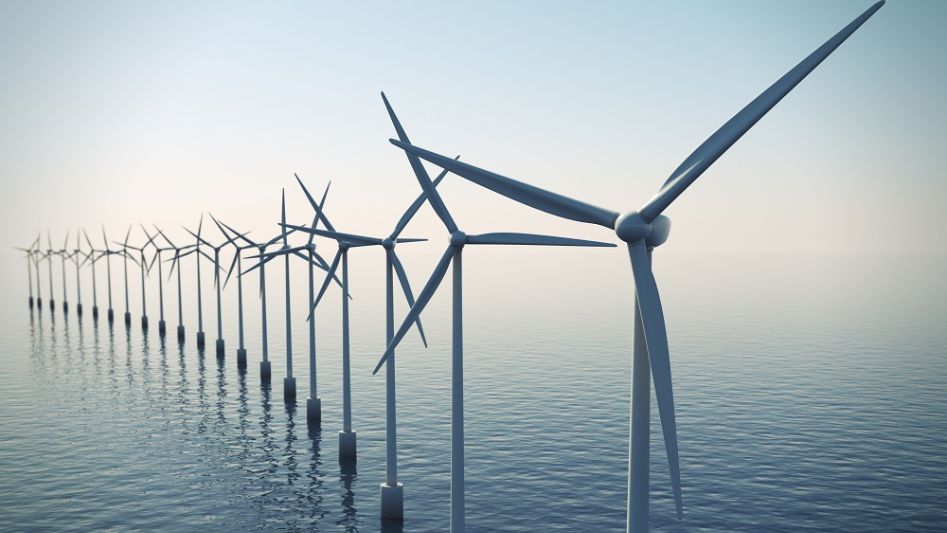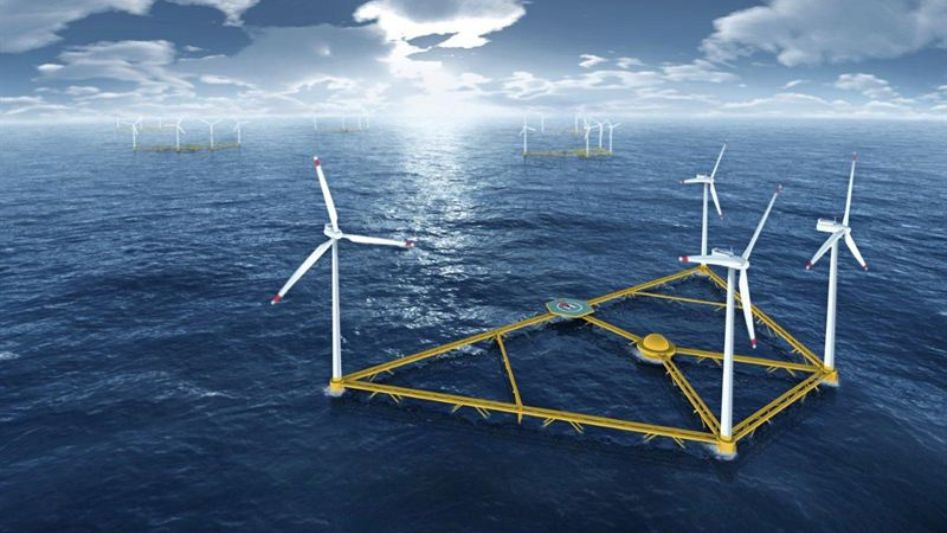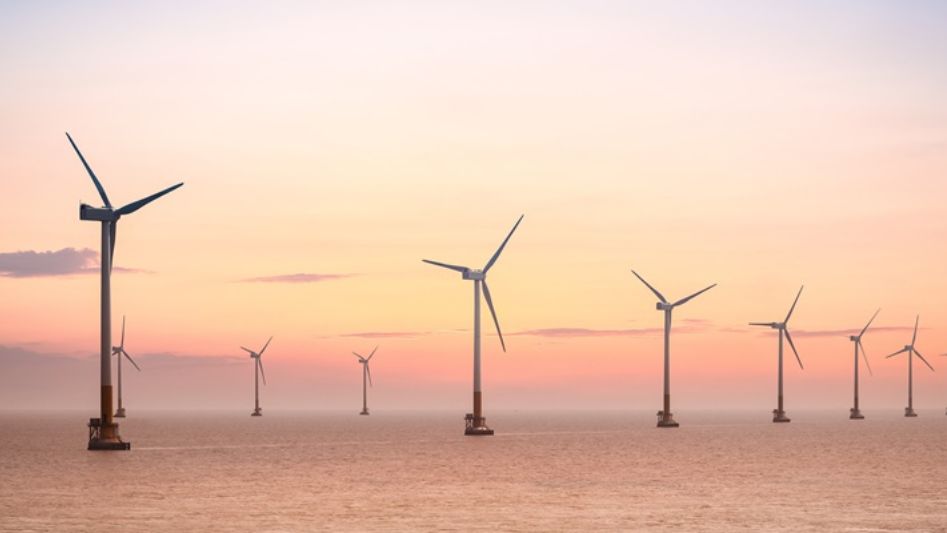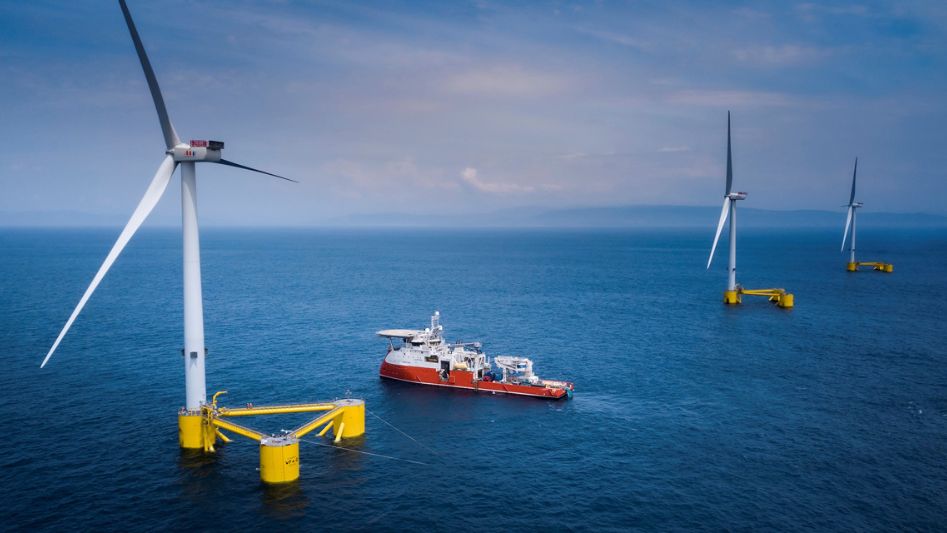Vertical-axis wind turbines (VAWTs), which have been on the edge of the wind industry for a long time, might be useful again on floating platforms.
Table Of Content
- Introduction
- Potential benefits over typical turbines
- Skepticism persists
- Conclusion
- FAQ
- You May Also Like
- External Links

Introduction
Vertical-axis wind turbines and floating offshore wind (VAWTs), which have been on the edge of the wind industry for a long time, might be useful again on floating platforms.
Recently, Swedish company SeaTwirl has been making waves with its floating offshore wind VAWT design. This week, the company said that it had received a patent in China, which is expected to become the biggest offshore wind market in the world in the next few years.
According to SeaTwirl, the patent was only just authorized in the United States for a design that would enable the generator and bearing housing to be changed just above the sea surface by a boat. This would cut down on the cost of installation and maintenance, and it would also cut down on the amount of downtime.
Traditional horizontal-axis offshore wind turbines have most of their sensitive parts high above the water. This makes it harder and riskier to do maintenance on the turbines.
One month ago, SeaTwirl announced that it had secured the support of offshore logistics business NorSea and Belgium’s Colruyt Group for a project that would develop a 1-megawatt prototype of their floating VAWT. The project would cost SEK 70 million, which is equivalent to $7 million. Gabriel Strangberg, CEO of SeaTwirl, told GTM that the company’s plans call for the S2 prototype to be constructed in 2020, most likely in Norway.
Studies done in the United States by Sandia National Laboratories showed that VAWTs may have a lot of potential to lower the cost of offshore wind on floating platforms. Since then, SeaTwirl has been making a lot of announcements about the company’s plans.
According to the findings of a study that took five years and cost $4.1 million, VAWTs have the potential to significantly reduce the cost of floating offshore wind turbines, as well as their installation and maintenance. This is because VAWTs don’t need gearboxes, high-speed shafts, yaw systems, or nacelles, which are all parts that tend to break down.
In an offshore setting, the main advantage of vertical-axis wind turbines (VAWTs) over horizontal-axis wind turbines (HAWTs) is that they might be able to work with less expensive floating platforms.
Dr. Brandon Ennis, the research head for Sandia’s wind energy technologies group, told GTM that the platform is the single biggest contribution to the levelized cost of electricity for floating offshore wind. “For floating offshore wind, the platform is the single largest contributor.”
It is possible that the system will benefit from having a rotor that is somewhat more costly but that has a platform cost that is much lower.
Even though floating offshore wind is just getting started, it is expected to take off in the 2020s as costs go down and many of the best places for offshore wind farms in shallower seas are already taken.
Potential benefits over typical turbines
A big problem for HAWTs installed on floating platforms is that many of the turbine’s heavier parts, like the motor and the generator, are high above the water.
This results in a significant overturning moment that the floating platform needs to stabilize, which is often accomplished by adding mass to the substructure. When it comes to VAWTs like the type developed by Darrieus that was researched at Sandia, all of the heavier components would be located at the base of the turbine.
This would not only help with its stability, but it would also make it simpler and less expensive to carry out repairs and maintenance on it.
Another benefit of VAWTs is that, in contrast to HAWTs, they are not affected by wind veer, which is when the wind changes its direction from lower to higher altitudes.

Finally, a specialized analytical company called Quest Floating Wind Energy believes that VAWTs may be able to assist in mitigating the wake effects that are associated with HAWT-based wind farms.
“The industry is looking at ever bigger turbines,” said Erik Rijkers, who is Quest’s head of market development and strategy. “The industry is looking at ever bigger turbines.” ” The GE turbine that generates 12 megawatts spans 220 meters. Because of this, floaters need to be placed around 1.5 kilometers apart, which leads to significant increases in the cost of cabling.
In contrast, he said that research conducted in France suggests that two VAWTs mounted on a single floater would actually boost each other’s performance. This would reduce the need for cabling and make the technology a solid bet for use in confined areas like lakes.
Importantly, whereas bigger HAWTs make things increasingly harder for floating foundations, in the case of VAWTs, an increase in size might enhance performance while also reducing the amount of money spent on operation costs. According to Ennis, “upscaling your business offshore will result in greater efficiency.”
Even though Sandia did not do an apples-to-apples comparison with HAWTs, the research organization determined that in the long term, the levelized cost of energy for a VAWT on a floating platform might decrease to $110 per megawatt-hour.
According to research that was conducted in 2017, the levelized cost of electricity for floating offshore wind farms using the technology that is now available for HAWT ranges from around $180 to over $200 per megawatt-hour.
Skepticism persists
Ennis acknowledged that the rising cost competitiveness of VAWTs at a larger scale might be a barrier to the technology’s implementation, despite the fact that this seems to be a strong selling point for the technology.
VAWTs have traditionally not performed as well as HAWTs when employed on a small scale, which is one of the reasons why they have not been used for the production of electricity on a large scale.
Because of this, any firm that wants to construct VAWTs for use offshore will need to find investors who are ready to take on the enormous development risk associated with going large.
Bruno Geschier, who is the chief sales and marketing officer of Ideol, a maker of floating foundations, has a healthy amount of skepticism about the notion. He said that it would take decades and billions of dollars to get a vertical-axis turbine with a capacity of 12 to 15 megawatts ready for commercial deployment.
According to the article, “Horizontal-axis [turbines] are already functioning at such scales and have a return on experience and industrial fabrication capability that no one could match.”
Conclusion
While bigger HAWTs make things more difficult for floating foundations, larger VAWTs may actually be more effective and cost-efficient. Although Sandia did not do a direct comparison with HAWTs, the research organization estimated that the levelized cost of energy for a VAWT on a floating platform may decrease to $110 per megawatt hour in the long run. As of 2017, one study estimated that the levelized cost of electricity for floating offshore wind using current HAWT technology was between $180 and $210 per megawatt-hour.
FAQ
Why are horizontal axis turbines preferred over vertical axis wind turbines?
As a result of their greater efficiency ratings, horizontal axis wind turbines (also known as HAWTs) have become the preeminent form of wind energy generation. The main benefit of wind turbines is that their blades turn in a direction that is opposite to the direction the wind is blowing. This means that energy can be made throughout the whole spin.

What are the advantages of the vertical axis in wind turbine?
Wind turbines with a vertical axis, often known as VAWTs, have the primary rotor shaft installed in a vertical orientation. One of the most significant benefits of this configuration is that the wind turbine does not have to be oriented in such a way as to capture the wind. This is very helpful in places where the wind blows in many different directions.
What is the main disadvantage of a Vertical Axis Wind Turbine?
The most significant disadvantage of a VAWT is that, in most cases, it produces drag while turning towards the wind. Because it is difficult to put vertical-axis turbines on towers, they are often located closer to the base on which they rest, such as the ground or the rooftop of a building. This helps maximize the amount of energy that can be harvested from the turbines.
Why do people float offshore wind turbines?
Floating offshore wind, which is built on floating structures rather than permanent ones, provides new opportunities and other choices. The deployment of wind turbines in bigger and deeper offshore regions with greater wind potential is made possible due to this innovation, which, in essence, throws open the door to locations farther offshore.
You May Also Like
- Wind Turbines For At Home: Benefits and Challenges
- Wind-Powered Cargo Ships: How Do They Work?
- How Large Is This Hybrid Solar & Wind Energy Facility In Europe?
- What Are Wind Turbine Blades Made Of? Could They Be Recycled?
- What Is A Vertical Axis Wind Turbine (VAWT)?

